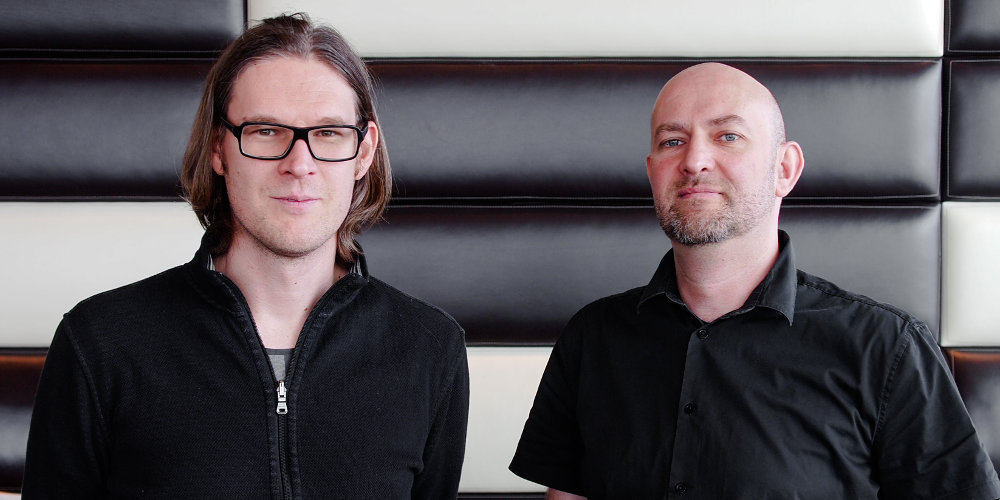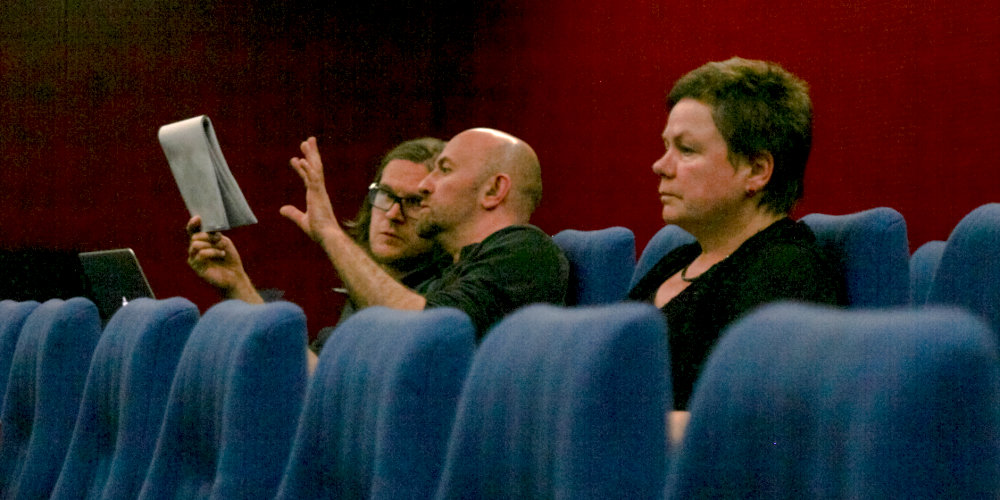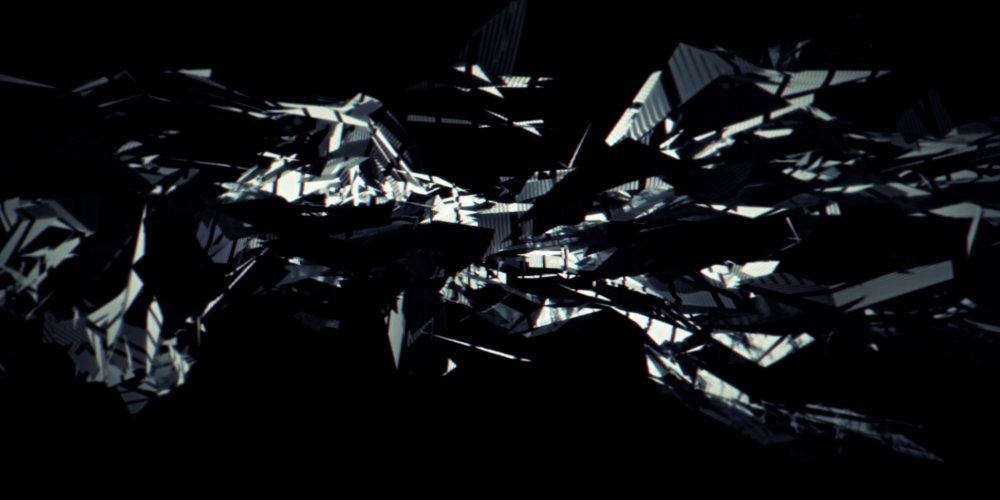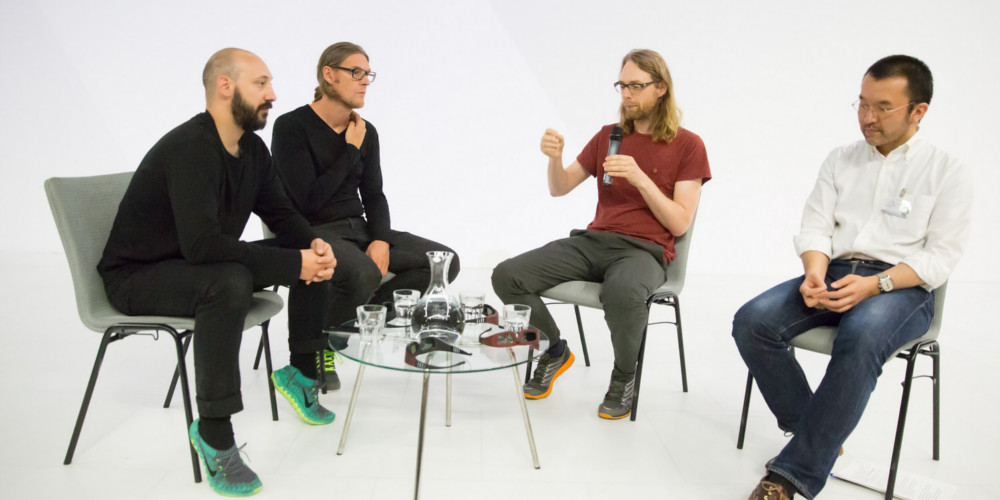Media art in moving pictures will be a mainstay of the 2015 Ars Electronica Festival. For the first time, the Symposium “Expanded Animation”, the Prix Forum and the screenings of computer-animated works will be held at a single location.
This year’s Ars Electronica Festival 2015 set for September 3-7, 2015 in Linz will feature a central hub for animation fans, a single venue hosting all the activities having to do with computer animation. The CENTRAL, a former movie theater right downtown, will be the place to go to enjoy a selection of the best animated works submitted for prize consideration to the Prix Ars Electronica. In addition to screenings, this will also be the site of the Prix Forum in the Computer Animation / Film / VFX category, where Prix jurors and cineaste festivalgoers can share insights. A festival highlight will be the next Expanded Animation symposium September 4-5, 2015. We recently got a sneak preview from the organizers, Jürgen Hagler and Alexander Wilhelm from the Digital Arts program at the Upper Austria University of Applied Sciences’ Hagenberg Campus.
Expanded Animation: So, what’s this all about; what are you guys up to here?
Jürgen Hagler: We came up with this idea in 2013. We wanted to stage a symposium at which undergrads at the University of Applied Sciences in Hagenberg could get together with international artists and researchers to discuss computer animation and what’s happening on the leading edge. Then we started collaborating with Ars Electronica and, of course, you start thinking in larger terms.
Alexander Wilhelm: The field of synthetic image production is huge, and on the periphery there are spinoffs in lots of directions, which means you tend to lose sight of all the areas in which animation and digital image production come into use. Our aim is simply to bring all these things together to show students all the potential that’s out there and the many fields they can work in. Animation is actually the essence of a human-generated imagery. This discipline is very wide-ranging and beautifully demonstrates the amazing stuff human beings can conjure up.

Jürgen Hagler and Alexander Wilhelm, Photo: Martin Hieslmair
“Human-generated motion pictures”—is that the overarching definition of animation?
Alexander Wilhelm: Yeah, roughly speaking, I’d say so.
Jürgen Hagler: That’s also what this event is all about. We put animation and computer animation in the focal point and see what’s developing on the periphery. And by considering all the so-called satellites—the connections to computer gaming, interaction, art, science and so forth—the natural upshot is to formulate a somewhat broader, more inclusive definition of the core.
We scrutinize other disciplines and overlapping areas in order to take these developments at the fringe into account in our definition of computer animation. The end result is a huge body of documents, screenings and events that constitute an endeavor to define and illustrate animation and its extensions.
This has worked really well in the past two years. We’ve also assembled an interesting community that gathers at the Ars Electronica Festival. We’re trying to make this an ongoing thing, and we’ve set up a nice website (expandedanimation.com) to make all the speeches available. So our aim in 2015 is to keep going in this direction.
Alexander Wilhelm: About the definitions—there are titanic confrontations on site, naturally. If you consider this little treasure-trove of speeches we’ve collected over the years, the result is a body of material that can ultimately yield a definition, and a core group of numerous experts who have weighed in on this subject from artistic and theoretical perspectives. And with the Prix Forum and the jury statements explaining why works in a particular form are relevant, we’ve taken yet another step in compiling a great summary of current developments in the field of animation.
Prix Forum, Photo: Tom Mesic
Jürgen Hagler: When the Prix Ars Electronica’s Computer Animation / Film / VFX category was initiated, there was a clear consensus about what computer animation is. When you survey developments in the meantime, this consensus has been repeatedly reconsidered, and the jury deliberations have consistently been a rich source of new ideas. This is also evident from the submissions to the Prix Ars Electronica. And this in combination with a symposium that addresses these developments, as well as ancillary events—these are excellent complements to the category with its manifold points of view and current trends.
Alexander Wilhelm: Important aspects of the symposium are, of course, always its function as a meet & greet featuring experts in a variety of disciplines, and the possibility of conversing with them. And therefore it’s also conceived as an Austrian conclave meant to bring together artists and people working in animation studies. So, attendees at this internationally renowned festival see that this is something to be taken seriously, and that it really is possible to make a go of this professionally. Our objective is to nurture this sense of professionalism and generate a communications pool.
And an important side-effect here is that people are motivated to acknowledge themselves with their work—while, all about them, in Europe and all over the world, billions of euros are being generated with this.
Which topics will Expanded Animation focus on this year?
Alexander Wilhelm: The big issue is the subject of hybridization, areas in which we notice that various technologies are dovetailing. This simply happens because people in search of spontaneous possibilities of expression suddenly comingle things and work with methods that weren’t conceived to be used in that way.
Jürgen Hagler: At this year’s festival, we’ll also be examining the nexus of technology, art and animation in an effort to shed light on possible paths that nobody’s taken yet. We’re rather less interested in state-of-the-art technology and the most beautiful images. We want to get back to the roots of animation and consider a time when filmmakers were also inventors of techniques. The really exciting part of this is that they used technologies that were already established. In the early days, technology that had not been designed for animation was used for artistic purposes. This occurs repeatedly—in entries for Prix Ars Electronica prize consideration too.
Then, you’re suddenly surprised with what you can do with technology that you’ve been using yourself in other ways.
Can you cite an example?
Alexander Wilhelm: A classic example is the bullet time effect used in the film “Matrix.” Here, somebody had the idea of a radial camera setup, and then pulling the film through them. So this effect was the outcome of an experiment. Another example is the 3-D scan. There exist such wonderful methods today to create 3-D scans from photos, and there are even various software packages, several of them free-of-charge. I can register a situation completely geometrically by simply taking a few snapshots at the site. It has suddenly become feasible to work with 3-D in a way that was previously impossible. Now, the door has been opened and we see the resulting potential. Needless to say, we can’t yet make out where this path is leading, but we can already see the little fringes developing.
Jürgen Hagler: Another example is “Shadowland” by Kazuhiro Goshima, who received an Award of Distinction in the Prix Ars Electronica’s Computer Animation / Film / VFX category in 2014. Stereoscopy is a technology that’s been around for over 150 years and whose development has accompanied that of photography. There have repeatedly been hypes when this has also been used in a film. But here you see a work that utilizes stereoscopy in a totally different way.
Is this a recent phenomenon, people thinking up ways to combine different stuff?
Alexander Wilhelm: This has been going on since time immemorial. But now we’ve broken through the sound barrier, so that the availability of technology and the democratization of techniques have grown rapidly. This has to do with a lot of things—just consider, for example, mobile devices, portable computers for everyman.
Computers were never conceived as something you could go for a quick stroll with. And suddenly, you can.
Here, this combination coalesces—people interested in photography and video filmmaking, which is a huge market, and these digital strollers equipped with a smartphone as they make their way through the world and make everyday life a part of their modes of expression. A quickie photo here, a video here, and over there a 3-D scan of a space—simply because it’s possible. It’s a technological coincidence that everything’s so beautifully interwoven now. Naturally, there have always been artists who were very imaginative in combining elements, but this has been accelerating tremendously.

Jürgen Hagler and Alexander Wilhelm during the Jury meetings in which the jurors of Prix Ars Electronica 2015 nominated the winners of the category “Computer Animation / Film / VFX” , Photo: Martin Hieslmair
It’s also getting harder for jurors to single out animated films for recognition …
Jürgen Hagler: Yeah, just because many people have these possibilities now doesn’t automatically mean that a lot of them are heading off in innovative new directions. We’re interested in innovators who deal creatively with technology. And there are also people who develop technology themselves via modification or hacking.
https://youtube.com/watch?v=E2lNz1LqYyQ
Alexander Wilhelm: From its very inception, the cinema has involved trickery—think of Georges Méliès, for instance. He was already brainstorming the first tricks before there was even a movie camera. The option of stopping the reel, changing something and starting to shoot again—he developed a lot of things in a very short time. And now there are people like YouTube star Zach King, who can simply and quickly turn out special effects films using the same trick that Georges Méliès used, but who do it in such a sophisticated way that you don’t even notice it. These effects had people scratching their heads for weeks. Then, a making-of came out and showed what a utterly banal solution was used to achieve the effect. This is also a basic element of what animation represents. Innovation can sometimes be a step backwards too.
Animation always needs a surface on which to be represented—the screen of a movie theater, for instance. This is another instance of boundaries getting blurred.
Jürgen Hagler: Naturally! In Expanded Cinema, the point of which is to go beyond the cinema, we are very intentionally taking this up. Animation can also do away with surfaces entirely; it can be three-dimensional, it can be a performance, or it can be sculptural on various projection mappings. This also illustrates the difficulty of showing something. When you document projection mappings, installations and sculptures that were conceived for a different context, what you get is a documentation that you can also show in a movie theater.
Alexander Wilhelm: A documentation in this sense fails to do justice to the work. Projection mappings refer to a specific place, and this problem is difficult to solve at present.
At the Ars Electronica blog we will continue to inform you about further program points that you will expect at the Ars Electronica Festival, from 3rd to September 7th, 2015, in Linz. For more information about the festival please have a look at ars.electronica.art/postcity!

